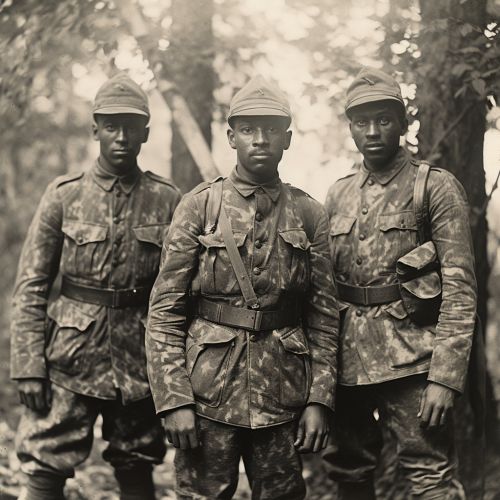Camouflage in Military Warfare
Introduction
Camouflage in military warfare is a critical aspect of modern combat and has been a significant factor in many historical conflicts. It involves the use of various methods to conceal military personnel and equipment from observation by the enemy, making them less visible to enemy forces. The practice of camouflage in warfare has evolved over time, with advancements in technology and understanding of the principles of visual perception.
History
The use of camouflage in warfare dates back to ancient times. Early warriors used materials available in their environment, such as foliage and mud, to blend in with their surroundings and avoid detection. In the Middle Ages, armies began using more sophisticated methods, such as painting their equipment and clothing to match the terrain. The concept of camouflage was further developed during World War I, when armies started employing professional artists, known as camoufleurs, to design and implement camouflage schemes.


Principles of Camouflage
The principles of camouflage are based on the science of visual perception. The human eye and brain perceive objects based on their shape, color, and pattern. By manipulating these elements, camouflage can make an object difficult to detect or recognize. There are several types of camouflage, including concealment, disguise, and disruptive coloration.
Concealment
Concealment is the most basic form of camouflage, involving the use of natural or artificial materials to hide an object or person. This can be achieved through the use of nets, foliage, or other materials that blend in with the surrounding environment.
Disguise
Disguise involves making an object or person appear as something else. This can be achieved by altering the shape, color, or pattern of the object or person to mimic another object or feature of the environment.
Disruptive Coloration
Disruptive coloration involves using contrasting colors and patterns to break up the outline of an object or person. This makes it difficult for the observer to recognize the object or person as a distinct entity.
Camouflage Techniques
There are various techniques used in military camouflage, including the use of paint, nets, and fabric. These techniques can be applied to personnel, vehicles, and structures to reduce their visibility.
Camouflage for Personnel
For military personnel, camouflage often involves the use of camouflage clothing and face paint. The design and color of the clothing are chosen to match the environment in which the personnel will be operating. Face paint is used to break up the distinct features of the face, making it harder to recognize.
Camouflage for Vehicles
Military vehicles are often painted with camouflage patterns to make them less visible. Additionally, nets and foliage may be used to conceal the shape of the vehicle.
Camouflage for Structures
Military structures, such as bases and fortifications, are also camouflaged. This can involve painting the structures, using nets, or constructing the structures with materials that blend in with the surrounding environment.
Modern Camouflage
Modern camouflage has evolved to counter advances in detection technology. This includes the development of stealth technology, which reduces the visibility of military equipment to radar and other detection systems. Additionally, digital camouflage patterns have been developed, which use pixelated designs to disrupt the outline of the wearer or object.
Conclusion
Camouflage in military warfare is a complex field that combines art, science, and technology. It plays a crucial role in modern warfare, helping to protect military personnel and equipment from detection and increasing the effectiveness of military operations.
